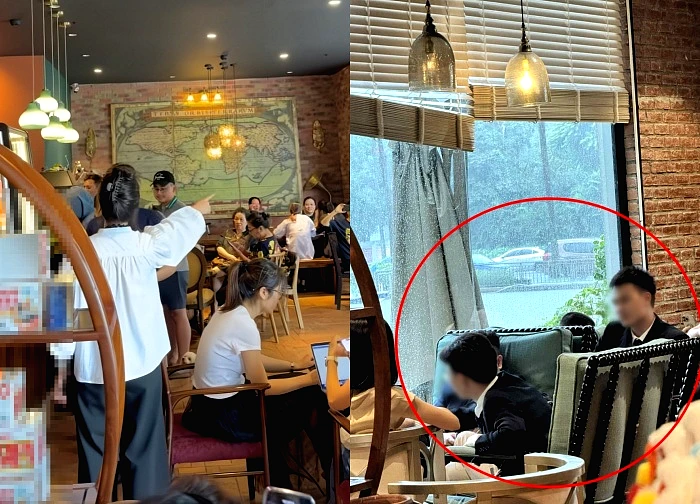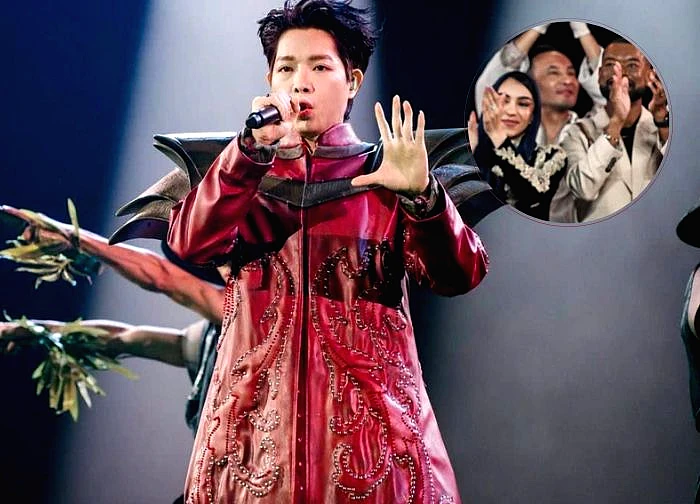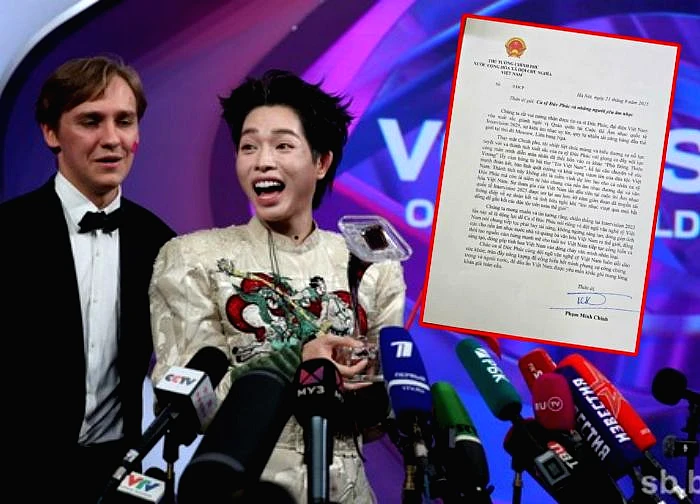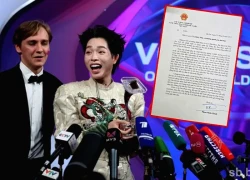Government Information Page lists Ung Hoang Phuc in the ward, extremely tense content

3 | 0 Discuss | Share
Popcorn is often seen as a snack, a healthy food. But hidden behind the popcorn that we often enjoy are many thrilling stories.
There are many legends and fairy tales about popcorn. According to a legend, one summer it was so hot, the weather was so hot that the corn kernels in the cornfield began to burst and fly out of their corn. The cows and pigs thought it was a big blizzard and they started running away from the farms. In fact, it's just popcorn that we still call popcorn now. In the fairy tales of the American Indians, the legend of popcorn is mentioned as a very sacred story. They believe that when the popcorn kernels explode, the souls are released into the air. These are stories that have been passed down orally from generation to generation, and to this day, children and even adults still believe them. What about the true origin of popcorn?
For movie enthusiasts, buying popcorn into the cinema is nothing new. But few people know that popcorn was banned from the cinema and it had to go through many ups and downs before becoming the savior of today's cinemas.
Born before B.C
When it comes to popcorn, the oldest history of this dish is found in a bat cave (some books say these documents were written about 3000 years ago) in western New Mexico in the year. in 1948 and 1950 by an anthropologist named Herbert Dick and a botanist named Earle Smith, graduates of Harvard University. They discovered a layer of garbage as well as other types of waste that existed more than 2,000 years ago. In the pile were more than 766 corn cobs, 125 split corn kernels, 8 pieces of cob, 10 corn husks, and some corn silk. The deeper they dig, the more primitive and smaller they found, until digging to the bottom they discovered a small cob with some of the kernels cracked and nearly broken off. These corn kernels are so well preserved that they can still be blown apart. In fact, they took some unexploded corn kernels and put them in a bowl filled with hot cooking oil to show that they could still explode. They carbon-examined these specimens and found them to be about 5,600 years old.
The discovery of popcorn took a lot of time, people constantly discovered evidence related to the appearance of popcorn. And people have studied the appearance and popularity of this dish from the 4th century BC to the 20th century and until today when popcorn has become familiar and extremely popular. language.
By roasting the kernels of corn causing them to burst as the water and starch compressed in the kernels are released when exposed to high heat, old-fashioned popcorn is often considered a treat. Archaeological evidence shows that about 3,600 years ago, Native Americans popped corn in a clay pot with a small hole in the lid.
Western encroachment in the Americas brought them into contact with corn and popcorn. Due to the rather bland taste, the housewives added butter and sugar to the popcorn for breakfast. However, up to this point, popcorn is still an uncommon side dish. Even with the frills, popcorn is not a favorite street food of the people.
The popcorn machine was invented by the Charles Cretors family of Chicago, Illinois in 1885. To test his machine, he had to run it on the street and serve a few customers. He began manufacturing these machines and began circulating them on December 2, 1885. Up until that time, popcorn makers used to sit in front of large supermarket stores to attract customers. . This large, slow, and cumbersome popcorn maker uses gasoline to heat it. Popcorn vendors often go to places with crowds such as fairs and parks and then follow the correct heating process to produce popcorn. This process continued until the years 1929-1939, the stagnation years of the US economy. Today, there are still many places that make popcorn using machines made by the Cretors, chances are tomorrow when you go out to the movies and buy a bag of popcorn, remember that the machine that made them has already passed. invented two centuries ago.
The invention of the popcorn machine made the price of this buttery, sugary food even more attractive. However, popcorn is still just an average snack of street vendors, even banned from being brought into theaters. Although they appeared in circuses, festivals, and many entertainment activities, they were absolutely absent in early theaters or cinemas. So what changed it all?
From forbidden goods to saviors
Before the Great Depression of the 1930s, popcorn was the most heavily banned item in movie theaters or theaters. In fact, before the first film was shown in 1896, the theater was the main entertainment of the upper class.
Because the performance scene required the attention of the audience as well as the high culture of the time, snacking on things like popcorn was considered impolite. Even other snacks are not allowed during the show.
In April 1896, the first film was shown to the public in New York City using equipment from inventor Thomas Edison. In 1902, the first electric cinema was built and this was also the first cinema that only showed movies, not other shows.
At this time, all movies are without sound and they require people with knowledge, proficiency to read the translated text or understand the content conveyed. Going to the cinema these days was mainly for the educated aristocracy and, of course, it was forbidden to popcorn or distracting snacks.
Early cinematic productions were often silent films with translators and piano players, so eating in theaters was considered impolite.
The sound of eating and drinking will influence people in watching movies as well as reading translations. In addition, cinema owners also do not want their premises to be littered with junk caused by junk food, especially in places where there are large gatherings of the upper class.
In 1927, the famous film was born and regardless of whether they were literate or readable, rich or poor could enjoy the film. Taking advantage of this opportunity, a series of popcorn shops lined up in front of movie theaters to sell food to the working or middle class who wanted to go to the movies.
However, cinemas still ban popcorn because they want to keep it clean as well as the idea of "upper" to avoid making noise in the theater. Even those who enter are checked to see if they have hidden popcorn.
Things only started to change when the Great Depression of 1930 hit. While all kinds of snacks have increased in price, popcorn is still cheap due to its large supply and extremely simple production process. This makes popcorn sellers big profits.
In contrast, cinemas were forced to close in bulk as even the elite saved money during the Great Depression. Realizing that if they don't find a way to live, the movie industry in the US will be wiped out quickly and the fact that popcorn peddlers have attracted the attention of some bosses.
The story begins when RJMcKenna, a director of a chain of 66 cinemas in the US, although he hates popcorn, decides to sell it in the theater corridor to make a profit.
In 1938, when McKenna decided to sell popcorn in the cinema, the theater's ticket sales after expenses were close to zero, but in return, they made nearly $200,000 in profit from the sale of popcorn. This figure, including inflation, would be equivalent to $3.5 million today.
Realizing that he had discovered a gold mine, McKenna decided to reduce ticket prices from 50 cents to 15 cents to attract more moviegoers, in return the theater would make a profit from selling popcorn and drinks. Since then, the movie theater business in the US started selling all sorts of snacks and drinks to make a profit. Lowering ticket prices also causes more conductors to go to the movies and indirectly increases profits for the industry.
However, popcorn is still just one of the many snacks of this era, especially when the Great Depression is over and the cost of living is gradually recovering. So how can they beat other junk food to become a movie theater icon?
Rise through war
During World War II, the sugar supply chain to the United States was disrupted. The government also prioritized supplying sugar to the army, leading to shortages of sugar, candies or any other sweets on the stalls.
As a result, cinemas now have only popcorn as the only bright item sold to audiences. By the end of World War II, Americans had consumed three times as much popcorn as before the war, and this snack officially became the symbol of movie theaters. Even as television flourished in the 1950s, the popcorn industry continued to boom 500% more than before as households bought more snacks to take home and watch more TV.
Still, about 50% of popcorn consumed in the US comes from movie theaters, and this business model persists to this day. After all, movie theaters can get 100% of the revenue from selling popcorn and drinks, but they can only receive about 40% of ticket sales because they have to share with movie producers and distributors.
Today, popcorn is processed in many different ways and is still very popular with young people. People can add a little salty and sweet butter to their taste to create delicious popcorn dishes and sip every time they enjoy a TV series. You can find popcorn in many places, and since it's so popular, it's also quite affordable. Of course, you should not eat too much because eating too much of anything is not very good for your health!
In addition, the profit from popcorn is the main source of income to help cinemas maintain operations, including the cost of lights, air conditioners, labor... So if you are a movie enthusiast and want movie theaters. If it still works, it's not the movie ticket but the popcorn itself that should be purchased.

3 | 0 Discuss | Share

4 | 0 Discuss | Share

2 | 0 Discuss | Share

6 | 0 Discuss | Share

2 | 0 Discuss | Share

4 | 0 Discuss | Share

7 | 0 Discuss | Share

3 | 0 Discuss | Share

2 | 0 Discuss | Share

5 | 0 Discuss | Share

4 | 0 Discuss | Share

4 | 0 Discuss | Share










1 | 0 Discuss | Report